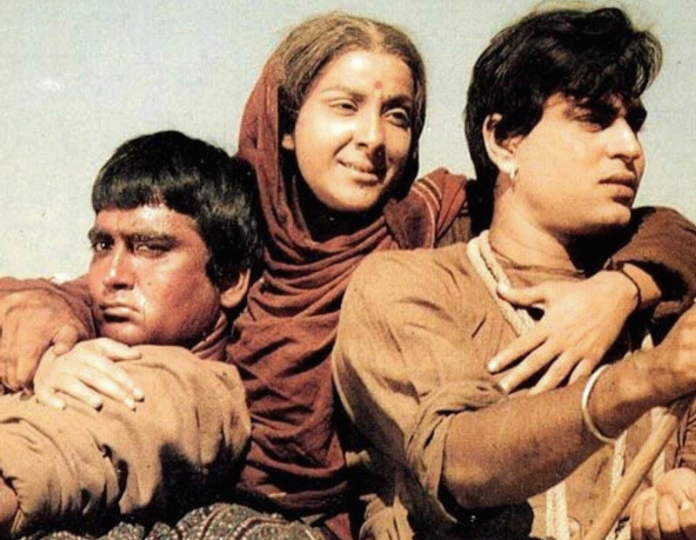Litreray genius Wajahat Mirza was a poet, dialogue writer, screenwriter, story writer, and film director, best known for his work in films like Shaheed (1948), Shikast (1953), the Academy Award nominee, Mother India (1957), Yahudi (1958), Kohinoor (1960), Mughal-e-Azam (1960), Gunga Jamuna (1961), Leader (1964), Love and God (1986), and many more.
Birth and Early Career
Wajahat Mirza was born as “Mirza Vajahat Hussain Quizilbash Changezi” on April 20, 1908, in Sitapur, Uttar Pradesh. He grow up in a orthodox Zamindaar family, where taking up a job for others was a big taboo. Mirza broke the tradition as soon as he completed his studies. His family relocated to Islampur, a small town 89 kilometers from Lucknow, during his childhood. Exposure to classical Urdu literature and poetry influenced his later dialogue-writing style.
Mirza attended Government Jubilee Inter College in Lucknow. While at college, he met cinematographer Krishan Gopal from Calcutta, sparking his interest in filmmaking. On the pretext of getting a higher education, he moved to Calcutta. In Calcutta he joined the world of cinema as an assistant to Krishan Gopal. Later, he became an assistant to the filmmaker “Debki Bose.”
Early Success
In 1933, Wajahat Mirza wrote the dialogue for Yahudi Ki Ladki, produced by New Theatres. The film was based on a play by Agha Hashar Kashmiri, and stars K. L. Saigal, Rattanbai and Nawab Kashmiri. Soon after the film he moved his base to Bombay.

His early work included assisting on film sets, gaining hands-on experience. In 1934 he wrote the dialogue & screenplay of Ramniklal Desai’s Anokhi Mohabbat, starring M. Kumar, Sitara, and Yaqoob. Some sources says that he was also the co producer of the film alongwith M Kumar.
In Bombay he met with legendary filmmaker Mehboob Khan. In 1938, he co-wrote the costume drama “Watan (1938)” with Mehboob Khan. The film stars Kumar, Bibbo, Yakub, and Sitara Devi, in her first lead role. It’s set in Russia, depicts the oppression of Cossack people by ruling Bolsheviks and the Cossacks’ fight for independence. The film was cleverly written to mirror India’s struggle for independence against the British.
He went on wrote films like “Hum Tum Aur Woh (1938),” “Ek Hi Raasta (1939), “Aurat (1940),” and “Behen (1941).” for Mehboob Khan. In 1942 Wajahat Mirza wrote the anti-capitalist story “Roti” for Mehboob Khan. The film tells the story of a greedy Seth Laxmidas (Chandra Mohan), who accidently reach in a village of jungle dwellers. The simple people help him, but he betrays them and steals their cattle. The film is a commentary on the moral decay of modern capitalistic and materialistic society.
In 1942, Wajahat Mirza directed his first film, “Swaminath,” followed by “Jawani (1942),” “Shahenshah Babar (1944),” “Prabhu Ka Ghar (1945),” and “Nishana (1950).”
In 1945 He wrote Shaukat Hussain Rizvi’s blockbuster “Zeenat (1945)” starring Noor Jehan, Yakub, Karan Dewan and Himalayawala. “Shaheed (1948)” starring Dilip Kumar and Kamini Kaushal, “Chilman (1949),” “Shikast (1953),” and “Aawaz (1956).”
In the mid-50s, Mehboob Khan started working on a remake of his earlier film “Aurat,” and he requested Mirza to write it. The film was “Mother India (1957),” which became a huge blockbuster and the first Indian film to receive an Oscar nomination for Best Foreign Language Film. It lost to “The Nights of Cabiria” from Italy by just one vote.
Starring Nargis, Sunil Dutt, and Rajendra Kumar, Mother India, portrays a mother’s struggle against poverty and injustice. Mirza’s dialogues, blending rural simplicity with emotional depth, amplify the film’s social commentary. The iconic line, “Insaan ke dil mein basne wala khuda hi saccha khuda hai,” are still fresh in the minds of film lovers. The film earned an Academy Award nomination for Best Foreign Language Film, a rare feat for Indian cinema, and was a box-office hit.
The Genius of Wajahat Mirza
After Mother India comes the magnum opus of K. Asif, “Mughal-e-Azam” (1960), which has the exact opposite requirements. The setting was historical, with dialogue in Chaste, literary Urdu. For the herculeun task Mirza collaborated with fellow writers Aman, Kamal Amrohi, and Ehsan Rizvi. People thought that the heavy language of the film would hamper its box office. In reality, the language gave the film its authenticity and believability. The dialogue became so famous that today people easily quote it in everyday situations.
For his exceptional dialogue writing in “Mughal-e-Azam,” he received the Filmfare Best Dialogue Award in 1960. The following year, he won the same award for Dilip Kumar’s “Ganga Jamuna,” which was directed by Nitin Bose. The film and also starred Vyjayanthimala, Nasir Khan, Kanhaiyalal and Anwar Hussain. Ganga Jamuna’s dialogues were unique for their language, which was the “Awadhi dialect,” the first of its kind in Hindi cinema.
Mirza wrote for a few more films like “Yahudi” (1958), “Kohinoor” (1960), “Leader” (1964), “Palki” (1967), Yeh Gulistan Hamara (1972), Ganga Ki Saugandh (1978), and K. Asif’s delayed film “Love and God” (1986).
Personal Life and Later Years
Wajahat Mirza married Shamsunissa, with whom he had two children: a boy and a girl. He also had three younger siblings named Asghar, Mehdi, and Murtaza. Murtaza migrated to Pakistan as a young man and worked in the Pakistani film industry.
Wajahat Mirza died on August 4, 1990, aged 82. His legacy is not just confined to his awards and nominations. He influenced the narrative style and dialogue delivery that became a hallmark of Hindi cinema. His contributions have been acknowledged by contemporaries and successors alike, cementing his status as a stalwart of the industry.
Wajahat Mirza on IMDB